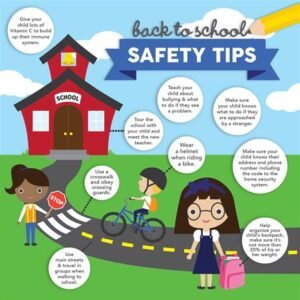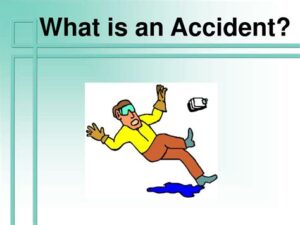Back to: Physical and Health Education JSS 2
Welcome to class!
In today’s class, we shall be talking about the causes of student accidents and safety measures at home. Please enjoy the class!
Causes of Student Accident and Safety Measures at School

Imagine a campus where students can learn and thrive without fear of accidents. This isn’t just a dream; it’s a reality achievable through proactive measures that address the root causes of student accidents and implement robust safety protocols. This class note delves into the factors that can compromise student safety and explores practical strategies to create a secure learning environment for all.
Understanding the Causes:

Environmental Factors:
Dilapidated Buildings: Cracked floors, loose railings, and leaky roofs pose imminent injury risks.
Uneven Walkways: Potholes, broken sidewalks, and cluttered hallways can lead to slips, trips, and falls.
Inadequate Lighting: Dimly lit areas can obscure hazards and create a breeding ground for accidents.
Lack of Supervision: Unmonitored areas invite risky behavior, especially during recess or extracurricular activities.
Behavioral Factors:
Negligence: Ignoring safety protocols, rushing between classes, or engaging in reckless activities can have dire consequences.
Risky Activities: Unauthorized access to restricted areas, partaking in dangerous stunts, or disregarding safety instructions can lead to serious injuries.
Equipment and Facilities:
Faulty Equipment: Malfunctioning lab equipment, outdated sports gear, or broken playground structures can cause significant harm.
Inadequate Maintenance: Overlooking routine maintenance of equipment and facilities can lead to unexpected breakdowns and potential accidents.
Building a Safe Space:
Infrastructure Improvement:
Regular Inspections: Regularly assess buildings, walkways, and equipment for potential hazards and implement prompt repairs.
Upgrading Facilities: Address outdated infrastructure, modernize safety features, and ensure accessibility for all students.
Enhanced Supervision:
Staff Training: Train faculty and staff on safety protocols, emergency procedures, and risk identification to create a vigilant school community.
Surveillance Systems: Strategically deploy security cameras in high-risk areas to deter risky behavior and monitor activity.
Behavioral Awareness:
Educational Campaigns: Conduct regular awareness campaigns on topics like fire safety, cyber security, safe commuting practices, and responsible behavior.
Reporting Mechanisms: Establish clear channels for reporting unsafe conditions, suspicious activities, or concerns to ensure immediate intervention.
Emergency Preparedness:
Drills and Training: Conduct regular fire drills, lockdown exercises, and emergency response simulations to prepare the community for unforeseen situations.
First Aid Stations: Ensure readily accessible, well-equipped first aid stations are available to address minor injuries promptly.
Creating a safe learning environment for students is not a one-time effort; it’s an ongoing commitment. By identifying the causes of student accidents, implementing effective safety measures, and fostering a culture of awareness and responsibility, we can create a campus where everyone can reach their full potential without fear or hesitation. Remember, student safety is not just a responsibility; it’s an investment in the future of our academic community.
We have come to the end of today’s class. I hope you enjoyed the class!
In the next class, we shall be discussing Meaning of occupational and workshop accident.
In case you require further assistance or have any questions, feel free to ask in the comment section below, and trust us to respond as soon as possible. Cheers!
Question Time:
- How can we raise awareness about the environmental factors that contribute to student accidents?
- What strategies can we implement to address issues of insufficient supervision in different areas of the school?
- What are some examples of risky behaviors that students might engage in on campus, and how can we encourage safer alternatives?
